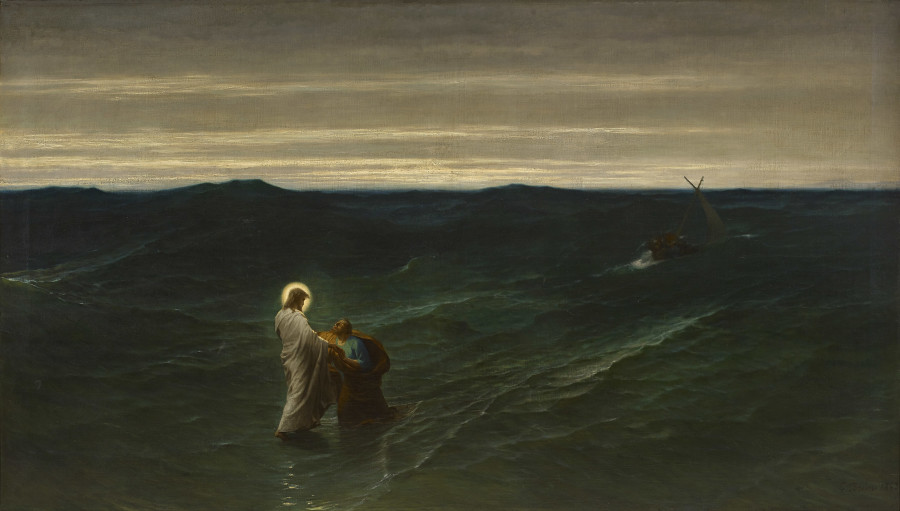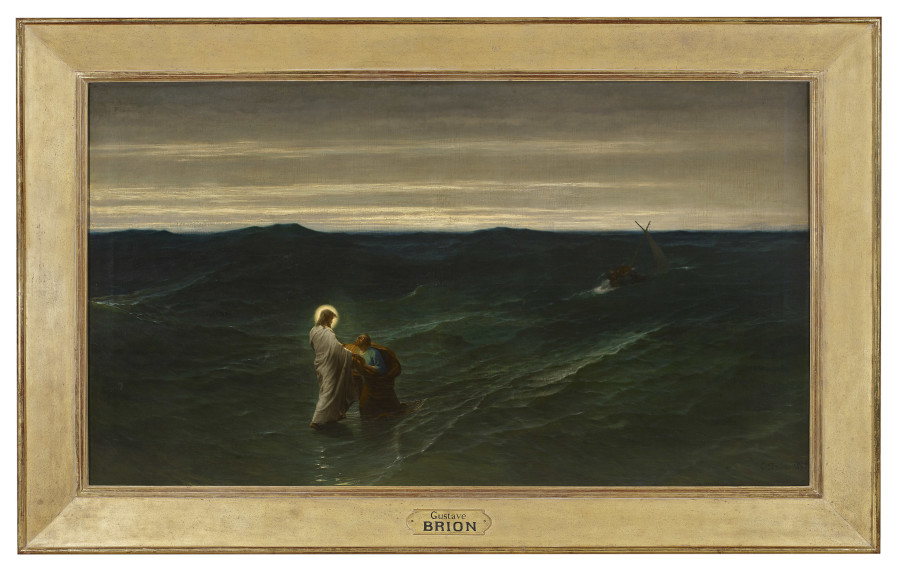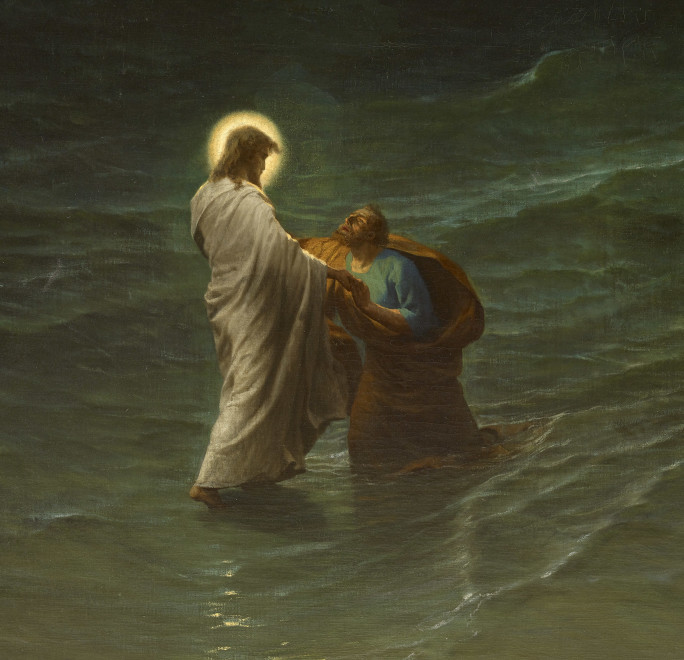112.1 by 184 cm.
"In the midst of immensity, the small figure of Christ in white drapery, grazing the waves like a seagull, supports the good saint Peter, who struggles to stay afloat. It is simple, grand and masterful. Here is a biblical painting.”
- Thoré-Burger's Salon review 1863
Provenance
Édouard Delessert (1828-1898)
Private collection, Paris
Exhibited
Paris, Salon of 1863, no. 284
Paris, Exposition Universelle, 1867, no. 100
Literature
Paul Mantz, “Le Salon de 1863,” Gazette des beaux-arts: courrier européen de l'art et de la curiosité, June 1, 1863, vol. 14, p. 502
Théodore Pelloquet, “Salon de 1863,’’ L’exposition, journal du salon de 1863, no. 9, June 7, 1863, p. 1
Alfred Darcel, Les artistes normands au salon de 1863, Rouen, 1863, p. 5
Thoré-Bürger, “Salon de 1863,’’ Les Salons, Études de critiques et d’esthétique, Bruxelles, 1893, vol. 2, p. 386
Exposition universelle de 1867, Rapports du Jury International, vol.1, p. 62
Olivier Merson, “Beaux-arts: Brion,’’ L’exposition Universelle de 1867 illustrée, 1867, p. 274
Paul Mantz, “Le Salon de 1867,” Gazette des beaux-arts: courrier européen de l'art et de la curiosité, June 1, 1867, vol. 22, p. 523
“Liste des principaux tableaux envoyés par les artistes français envoyés à l’exposition universelle,” La Chronique des arts et de la curiosité, no. 175, 1867, p. 77.
Xavier Dachère, “Gustave Brion,” L’Univers illustré, no. 1181, November 10, 1877, p. 715
Catalogue note
Gustave Brion was primarily known for his genre depictions of the local folk and customs of his native Alsace. There was a ready market for these charming scenes of peasants wearing authentic costumes as they provided a “documentary” of the popular folklore of the region. However, like most serious-minded and ambitious regional French artists, Brion understood the need to be in Paris in order to further his reputation. He moved there from Alsace in 1850, taking a studio in the same building as Jules Breton and François Bonvin on rue Notre Dame des Champs. Once in Paris, he also realized that fame and recognition could only be advanced with success at the Salon. It was in the mid 1860s that Brion’s star began to rise; in 1863 he received a First-Class medal at the Salon and was also awarded the Légion d’honneur. This was followed by a Second-Class medal at the 1867 Exposition Universelle and a medal of honor at the 1868 Salon.
Jesus et Pierre sur les eaux was one of Brion’s entries to the 1863 Salon and the 1867 Exposition Universelle, and was unlike any of his prior works. The subject is taken from the Gospel of Matthew 14:22-33:
Then he made the disciples get into the boat and precede him to the other side, while he dismissed the crowds. After doing so, he went up on the mountain by himself to pray. When it was evening he was there alone. Meanwhile the boat, already a few miles offshore, was being tossed about by the waves, for the wind was against it. During the fourth watch of the night, he came forward to them, walking on the sea. When the disciples saw him walking on the sea they were terrified. “It is a ghost,” they said, and they cried out in fear. At once Jesus spoke to them, “take courage, it is I; do not be afraid.” Peter said to him in reply, “Lord, if it is you, command me to come to you on the water.” He said, “come.” Peter got out of the boat and began to walk on the water toward Jesus. But when he saw how strong the wind was he became frightened; and, beginning to sink, he cried out, “Lord, save me!” Immediately Jesus stretched out his hand and caught him, and said to him, “O you of little faith, why did you doubt?” After they got into the boat, the wind died down. Those who were in the boat did him homage, saying, “Truly, you are the Son of God.”
Brion has placed the figures of Jesus and Peter in the vast expanse of a tumultuous sea; rising above the straight horizonal line of the sea is a stormy sky with horizontal bands of sunlight, signaling that calm waters lie ahead. The boat carrying the Apostles can be seen in the distance, its mast forming the shape of a cross above the crests of the waves. In his review of the 1863 Salon, the art critic, Théodore Pelloquet rightly compared Brion’s painting to Delacroix’s “Barque”, (most likely Pelloquet was referring to Delacroix’s Christ Asleep during the Tempest (The Metropolitan Museum of Art), a work that was exhibited in Paris in 1860 at the Galerie Louis Martinet, and which Brion could have seen. Pelloquet further suggested that Delacroix’s work served as Brion’s inspiration. While each painting depicts a well-known Biblical scene set at sea, Brion’s focus is more on the “marine landscape” than it is on the figures of Christ and his Apostles. His choice is interesting and greatly diverges from Delacroix in this regard, especially since Brion was a very accomplished anecdotal figure painter; in other words, one may have expected Brion’s painting to be more about the narrative of the Gospel than about its setting. Thoré-Burger’s Salon review conveyed the essence of Brion’s interpretation in its simplicity:
“In the midst of immensity, the small figure of Christ in white drapery, grazing the waves like a seagull, supports the good saint Peter, who struggles to stay afloat. It is simple, grand and masterful. Here is a biblical painting.” (Au milieu de l’immensité, la petite figure du Christ en draperie blanche, rasant le flot comme une mouette et soutenant le bon saint Pierre qui enfonce. C’est simple, grand et magistral. Voilà un tableau biblique.)






